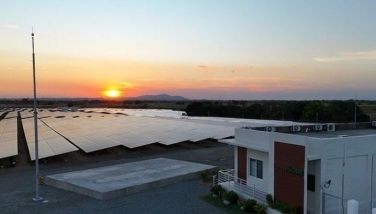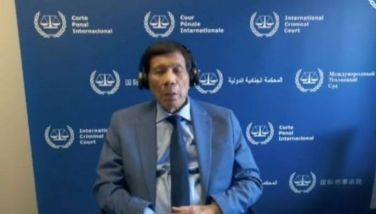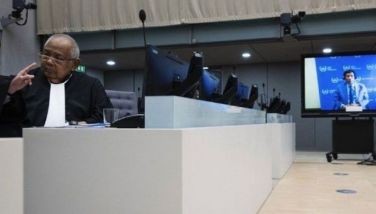About aerial spraying

Banana growers in Davao have appealed to President Gloria Macapagal-Arroyo not to ban aerial spraying.
According to them, aerial spraying in banana plantations should not be banned due to several reasons.
They claim aerial spraying is “the safest and most effective means of dispersing approved pesticide against black sigatoka, the most destructive airborne disease of bananas. Recommended fungicides under normal use do not pose a health risk and nobody has been adversely affected for the past 40 years of aerial spraying in the Philippines and for the past l08 years in Latin America.”
They say aerial applications are governed by Fertilizer and Pesticide Authority guidelines in addition to stipulations on Good Agricultural Practices by the Food and Agriculture Organization.
They further say that banning of aerial spraying will affect the $720-million banana industry in the Philippines. It will mean closing down of small grower cooperative farms owned by more than 30,000 agrarian reform beneficiaries and loss of livelihood to some 500,000 people dependent on the banana industry. This will also affect peripheral industries such as trucking, shipping, stevedoring, suppliers of crates, plastics, labels, etc.
According to the growers, a Department of Health-funded study on Health and Environment Assessment of Sitio Camocaan, Hagonoy, Davao del Sur conducted in 2006 and headed by Dr. Allan Dionisio of the University of the Philippines was ruled by the UP peer review as “scientifically flawed.” This same study was also ruled by experts of the World Health Organization as “inadequate, inconclusive; it has loopholes, the data is limited.”
The growers are also saying that the DOH’s conclusion to ban aerial spraying based on these studies, reports and reviews is not supported by adequate data. A Nov. 3, 2009 statement shows that WHO “does not have a formal position on aerial pesticide spraying for agricultural purposes.”
The WHO experts found several major limitations in the study so they could not recommend a ban on aerial spraying based on the study. Instead they suggested that DOH “review available literature and data from other countries as well as conduct surveillance, environmental monitoring and further epidemiological study on health effects of pesticide usage”.
According to the growers, the evaluation of the WHO experts implied that the Dionisio study does not have any value in the formulation of a national policy to ban aerial spraying.
In November 2009, the House of Representatives Committee on Ecology conducted an ocular inspection in Camocaan, which, environment advocates claimed had an uncomfortable number of diseases among residents due to aerial spraying. The inspection was followed by a public hearing at the Apo View Hotel, Davao City. Representative Rufus Rodriguez, after looking at the Camocaan issue said that the House of Representatives will push for a strict regulation — NOT A TOTAL BAN — on aerial spraying.
Other countries use aerial spraying but regulate its use to protect human health and environment. A 30-meter buffer zone is in effect in the Philippines but the banana plantations are actually applying a 50-meter buffer zone. The buffer zone is important in aerial spraying to protect the communities and other areas from the fungicide drift that is claimed by NGOs to reach as far as 3.2 kilometers.
Dr. Andrew Hewitt, one of the few world experts on bio-aeronautics who has conducted hundreds of studies on aerial spray for almost 20 years said that the airplane used in banana plantations here in the Philippines flies just over a few feet above the canopy of the bananas. Among his observations from his recent visit in a banana farm in Camocaan, Hagonoy, Davao del Sur is that aerial spraying does not produce a drift of the chemicals used, thus belying critics’ claim that the drift reaches as far as 3.2 kilometers. The aircraft in banana plantations sprays the fungicide down.
The growers mentioned that Hewitt saw aerial spraying in the Davao region to be among the best practices in the world because it is done professionally and properly. He cited the need to protect the local banana industry while at the same time protect the environment and the health of the people. “We can do both,” he said. “Rather than ban aerial spraying we can regulate it.”
Despite all these and the outcries from the banana industry, then Health Secretary Francisco Duque submitted a memorandum to President Arroyo recommending the banning of aerial spraying. Meanwhile, the Pilipino Banana Growers and Exporters Association led by its president Stephen Antig sent a letter to President Arroyo appealing not to ban aerial spraying.
It’s a good thing President Arroyo created a high-level task force to make an independent study on aerial spraying including effects on public health and environment. The task force to be headed by Presidential Adviser on Mindanao Affairs Jesus Dureza will be composed of key government agencies, experts and other stakeholders, taking into consideration internationally accepted standards on aerial spraying. The task force’s recommendations will help President Arroyo to decide whether or not aerial spraying should be banned.
* * *
On another front, experts agree that it is the poor who suffer the most from the effects of climate change. Look at what happened when Typhoons Ondoy and Pepeng ravaged Metro Manila and Luzon in September and October last year.
A special survey by the Social Weather Stations in the third week of October showed that hunger incidence rose to 18 percent, affecting mostly poor families. The figure represents an estimated 3.5 million families, 300,000 more than the estimated 3.2 million families in the preceding 3rd quarter hunger survey of SWS done on September 18-21.
The effects of these natural calamities were felt much longer as evidenced by the continuing rise of hunger incidence to 24 percent by the last quarter of 2009. This translates to about 4 million Filipino households reported having experienced involuntary hunger, equivalent to roughly 20 million Filipinos, assuming 5 members per household on the average. The situation could worsen in the next few months as El Niño could affect local food production as well as the prices of basic commodities such as food, fuel, LPG and water.
It is comforting to know that the government has been able to address the problem of post-disaster hunger incidence through its massive relief and rehabilitation efforts. With the combined resources and efforts of the member-agencies of the Anti-Hunger Task Force in collaboration with the National Disaster Coordinating Council and the local governments units concerned, the affected families have been provided with immediate food resources and medium-term subsistence by providing emergency jobs in various government offices and agencies.
* * *
My e-mail:dominimt2000@yahoo.com
- Latest
- Trending

























